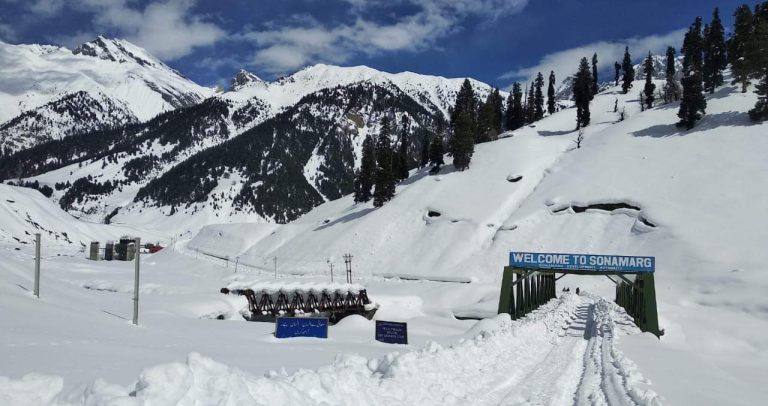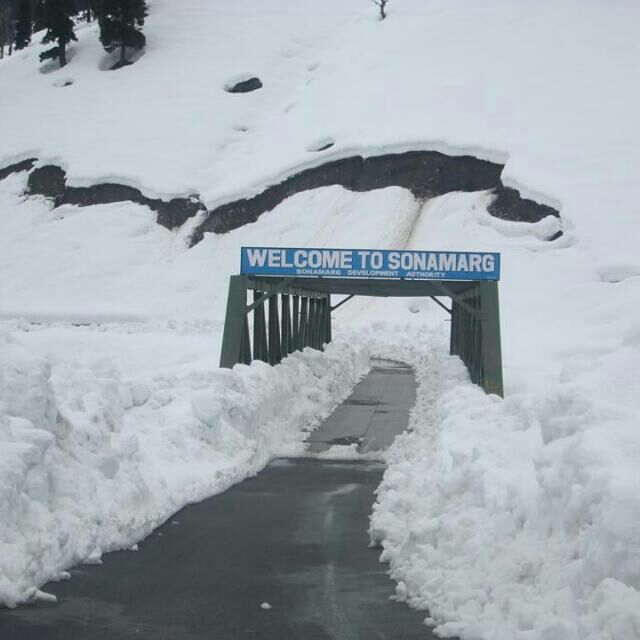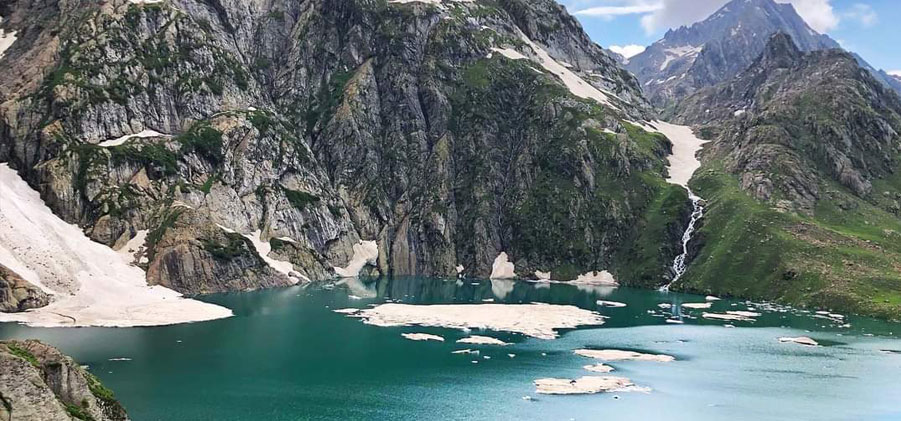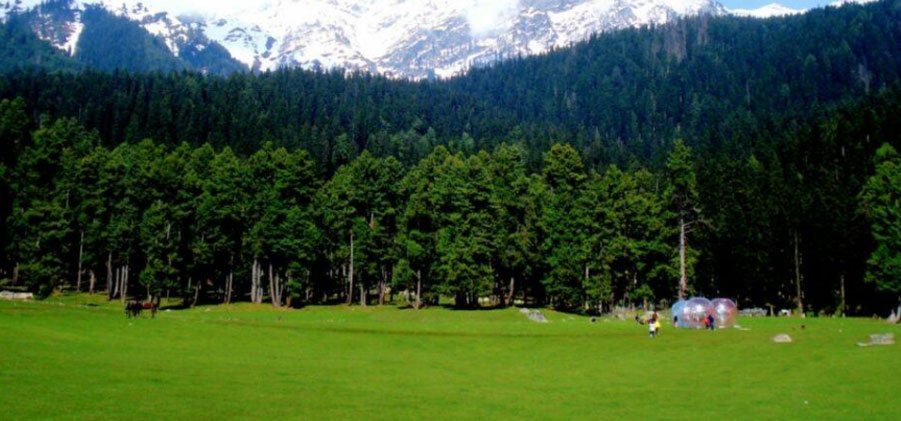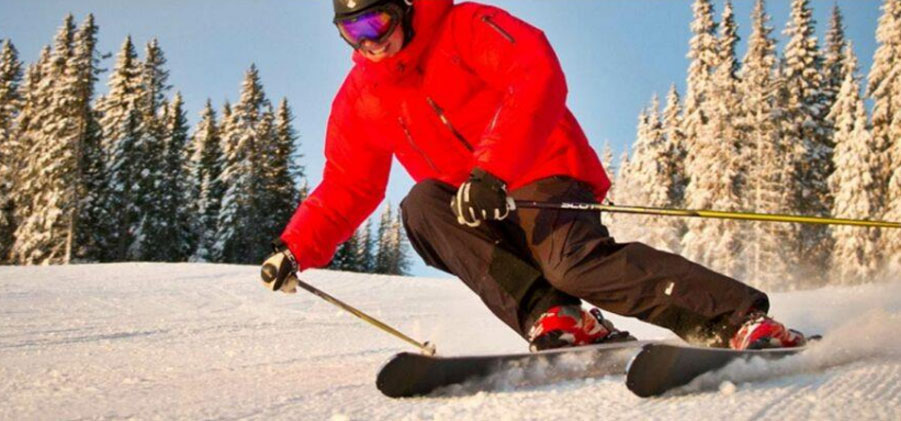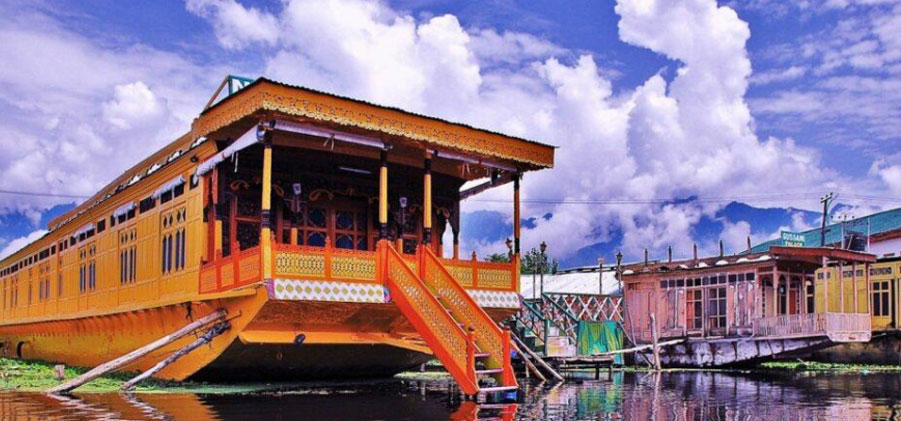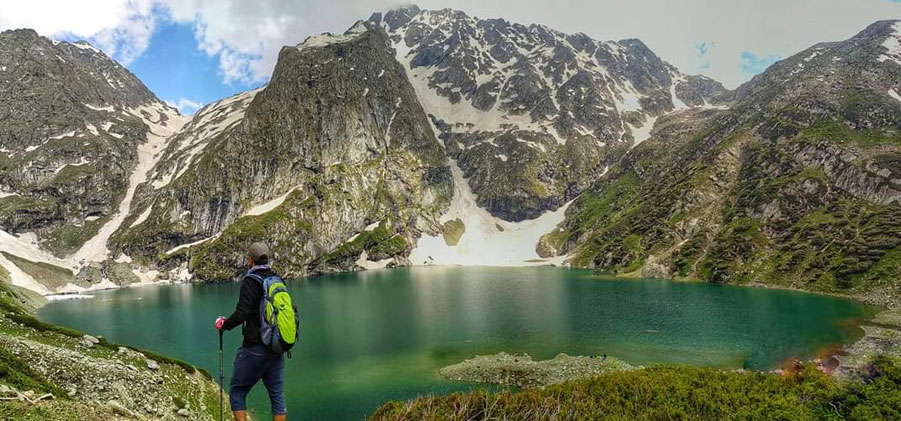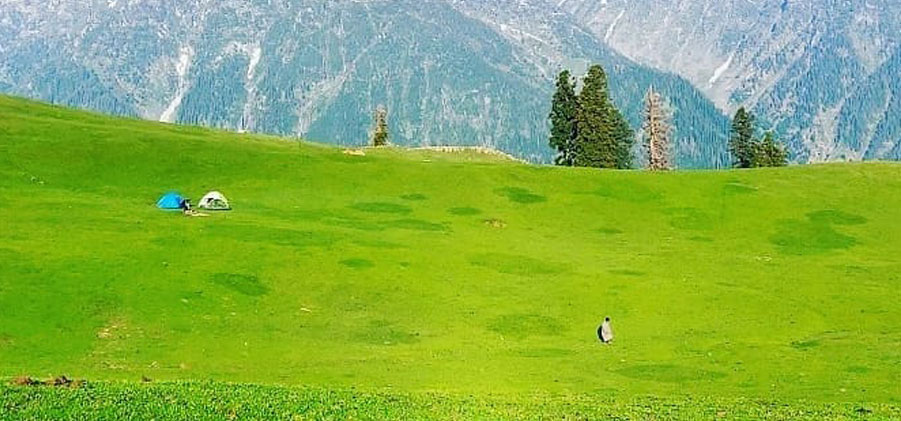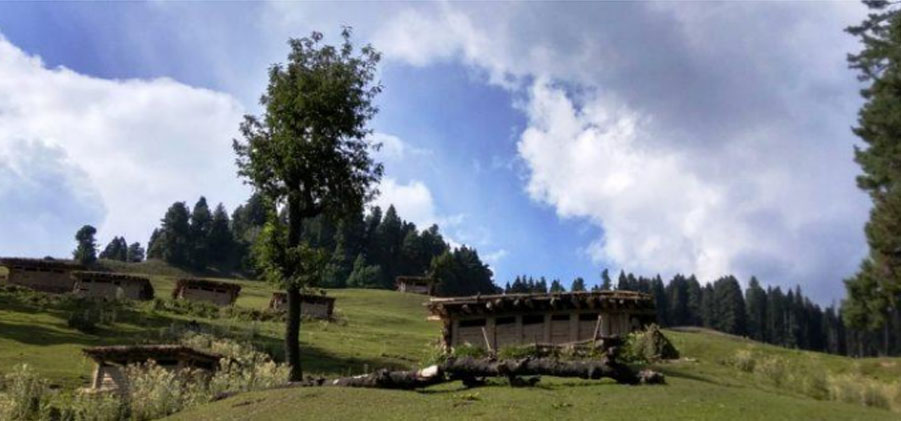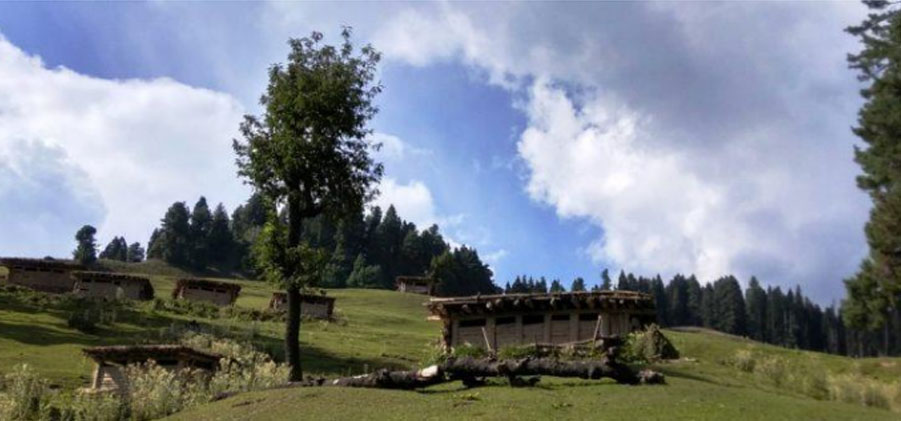Nestled high up in the mountains and beckoning the travellers from far and wide Kashmir Great Lakes trek is another hidden jewels of Kashmir. The trek to the Kashmir Great Lakes Trek offers a lifetime experience for all the nature lovers and the trekkers. The thundering hush of the Kashmir lakes and its virgin excellence is enchanted. Aside from the lakes, even the desolate smooth snow clad mountains emerge in might and pleased. You will start this amazing trek from Srinagar and then continue exploring the beauty of the region.
On your second day, you will start from Sonmarg. You will cover some of the most scenic places in a period of 8 days. As you continue your trek you will be rewarded with the mesmerizing views of the pictorial streams and the Shekdur Range. On your third day, you will trek from Nichnai to Vishansar Lake and come across the stunning views of the lush valleys and the small rivers on the side. Your trek will undergo a steep descend and will lead you to a cascading waterfall that joins the river.
Behold at the captivating views of the Himalayan Range and also the Vishansar Lake during the trek. On your fourth and fifth day, you will you will trek to Vishansar and then to Gadsa which will be around 11km of trekking. Marvel at the sight of the pictorial lakes and the exotic flowers and snow on both the sides. On your sixth and seventh day, you will cover Gadsar, Satsar and then to Gangabal Twin lakes. On both these days, you will cover a distance of 12km and 9 km respectively.
You trek will lead you to a gurgling stream and then to the beautiful lakes. Keep staring for long at the beautiful lake and also catch some trout fish while you are here. You will also pass through many small bridges and ramble on grassy land dotted with yellow flowers and pine forest during your trek. This Kashmir Great Lakes trek package is definitely the best trek for you to do in this year.
About the Destination:
Go on a Kashmir Great Lakes trek and get enchanted with Kashmir, a celestial land nothing short of a fairy tale. A surreal destination, there are many natural gems tucked away here. One of them is Srinagar, the summer capital of the state known for its refreshing gardens, lakes and houseboats. Another sought-after place here is Sonamarg. Meaning the meadow of gold this is where frosty mountains cast against the clear deep blue sky make for a postcard image. Pristine and untouched, the lakes over here be it Dal Lake, Vishansar Lake or Gangabal Twin lakes are surreal and a rare sight.
Alpine and snow clad mountains, green meadows, rocky terrains, gurgling streams, silver birch and other untouched beauties of Mother Earth make for a varied and complete trekking experience of around 63km. Rediscover serenity and uncover what makes Kashmir Great Lakes Trek a trove for adventure and nature enthusiasts seeking a thrilling experience of trekking in India. Kashmir Great Lakes best time to visit is from July to September. This amazing trek takes you through some of the most beautiful sights that are hidden from the normal eyes. The best part about the trek is that you will get a chance to see five beautiful lakes together and each reflecting the beauty of the other.
As you continue you will find that the mountains in the background make the whole place looks majestic. Witness the beauty of the lakes with the snowflakes on the top making the lake much prettier. Adding to it the golden flowers in bloom, the dark blue sky and the lush green grass will seem like just another heaven on earth. Each day of the trek holds something new for you which you will cherish for a lifetime.
Kashmir Great Lakes Trek Highlights:
– This trek is one of the most beautiful treks and is the only trek where you can explore five stunning lakes in the world at a high altitude.
– The trek to the Kashmir Great Lakes Trek offers a lifetime experience of vintage memories which you will cherish for a lifetime.
– Get a chance to witness the high mountain passes and the snow patches that feed the lakes. Occasionally you might also see milky white icebergs floating on the lake’s inky blue surface.
– Although this trek will lead you to some steep ascend you will also get to see small hamlets and the lights flickering there.
– Your trekking trail will take you through innumerable meadows, snow-clad glaciers and pinnacles passes, rocky barren lands, struggling streams.
Quick Facts:
Temperature: Day: 17°C-20°C and Night: 3°C-4°C
Trekking Distance: 72km
- Maximum Altitude: 13,800ft
- Difficulty Level: Moderate
- Starting and Ending Point: The trek starts at Sonmarg and ends at Naranag
- Railway Station: Jammu is the nearest railway station
- Airport: Srinagar Airport
- Base Camp: Sonmarg
- Itinerary
Day 1 – Drive from Srinagar to Sonamarg
The first day of the Kashmir Lakes Trek, spend time in the dreamlike place of Srinagar known for its refreshing gardens, lakes and houseboats. If you wish, you can take an iconic shikara experience at Dal Lake or amble through Mughal Gardens that unravels many beauties along the way.
Leave by the evening and be driven to Sonamarg by night. Spend overnight at a campsite in Sonamarg.
Day 2 – Sonamarg to Nichnai via Shekdur (9 to 10 km)
Today will be first day of this enthralling Kashmir great lakes trek!
After having breakfast at the guesthouse, start with a 3-4km trek from the Sonamarg and reach a roadside eatery, from where you can bag up all the required commodities for the day. Here onwards, the trek will be a gradula one and alongside the Sindh River, it will take you through maple and pine forests. Completing the hike through the forests, you will be rewarded with the stunning views of the Sonamarg Valley and pictorial streams.
Here onwards, the trek will descend down and will take you to the snow-covered Shekdur Range. Relax around the vicinity for a while before you start trekking towards the Nichnai, which is located at around 11,500ft above the sea level. Upon arrival in Nichnai, check-in into the campsite; dinner and overnight stay in the camp.
Day 3 – Nichnai to Vishansar Lake (13 km)
Starting early in the morning; around 08:00AM, start the trek towards the Nichnai Pass and enjoy the stunning views of the lush valleys and the untouched beauty of the region. Hereafter, cross the river and continue hiking through the banks of the river and arrive at the Nichnai Pass or the Vishansar Berry. Arriving at the pass, which is located 13,500m above the sea lelvel, witness and enjoy the meticulous beauty of the pass and the snow-covered peaks all around it.
Hereafter, the trek will undergo a steep descend and will lead you to a pictorial meadow of colourful flowers; while on this trek, you can also catch glimpses of a cascade that finally joins a river. Here onwards, continue with the hike and upon arriving a flat valley, continue towards its end and arrive at the campsite. Gazing on the left of this trail, you can also behold captivating views of the Himalayan Range and also the Vishansar Lake; overnight stay in the camp.
Day 4 – Acclimatization day in Vishansar
This day of the Lakes in Kashmir Trek would be a light one as you acclimatise yourself to the weather and rest at Vishansar.
Day 5 – Trek from Vishansar to Gadsar (via Kishasar and Gadsar Pass) (11km)
This chilly morning, witness the Kishansar Peak casting its reflection on the azure lake waters. Start the trek for the day towards the lakeside and reach the Kishansar Peak, which is situated around 500ft above the campsite. Here onwards, ascend to the other side of the water reservoir. The trek till here comprises of both easy and tough terrains.
Later part of the day, trek towards the Kishansar Lake and and finally make it to the Gadsar Pass that is perched at a height of 13,800ft and is the highest point of this trek. From the pass, pass through a flowery meadow and some of the pictorial lakes; Yamsar is one of these lakes.
From here, continue with the descend and after crossing Iris, reach the Gadsar Lake. A picturesque lake, it is adorned with the stunning beauty of exotic flowers and snow on both the sides. Arriving at the lakeside, report to the nearest Army Camp and complete the formalities of getting permission to pass Gadsar; ID proofs are a must for this.
Day 6 – Gadsar to Satsar (12 km)
Your day will begin with a walk from the army camp towards the stream. Brace yourself for varied terrains from super steep, flat and even land. Take a short break at Maengandob that is fringed by mountains.
Reach the first of Satsar lakes, which is a group of seven different lakes and follow the same procedure of yesterday with the army officials and set camps near the surreal first lake of Satsar.
Day 7 – Satsar to Gangabal Twin lakes (9 km)
A true test of calibre, this is the day when you will have you push your physical and mental limits! Trudge through rocks and boulders ridden terrain, pass the last of the Satsar lakes, and start hiking downwards for half an hour till you arrive at the forest line.
Here onwards, start ascending upward and reach an altitude of 13,400ft; during this climb, you can witness several ridges at different heights and the quaint Gujjar huts as well. From the summit, you can also behold the fascinating views of the twin lakes: Gangabal and Nundkol, that are connected to each other by a picturesque stream and are known for trout-fisihng.
Post this; trek through a sharp and rocky trail and make it to a gurgling stream, passing which, you will reach a lush meadow that advent towards the Nundkol Lake, which is also a popular weekend getaway among the locals. Trekking for around 20 minutes from the Nundkol Lake, you will finally arrive at the Gangabal Lake and by crossing the bridge across the lake; you will arrive at the campsite; dinner and overnight stay in the camp.
Day 8 – Trek from Gangabal to Naranag (12 km, 7 hours)to Srinagar.
On your final day of the Kashmir Lake Trek, start from the Gangabal camp, ramble on grassy land dotted with yellow flowers and pine forest. Descend are reach Naranag, the last leg of your trek.
Reach Naranag Village in Ganderbal District. If you wish, you can visit Naranag Temple. Be driven back to Srinagar and unwind in guest house for the night.
